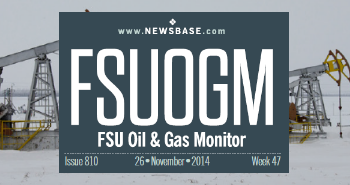FSUOGM: Nord Stream 2 declared ready for flow
.jpg)
Russia has finished filling the first string of the Nord Stream 2 with natural gas, meaning that the pipeline is now technically ready to operate. But there is still no clarity on when the pipeline will start pumping commercial volumes of gas to Europe, as first it must be certified by German regulators.
“The gas-in procedure for the first string of the Nord Stream pipeline has been completed,” the Gazprom-owned Nord Stream 2 operating company announced on October 18.
The string has been filled with 177mn cubic metres of so-called technical gas, Nord Stream 2 said, bringing its pressure to 103 bars.
“This pressure is sufficient to start gas transportation in future,” the operator said. “Pre-commission steps for the second string are ongoing. Nord Stream 2 will inform about further technical steps in due time.”
Germany’s energy regulator Bundesnetzagentur is the process of deciding whether to certify the Nord Stream 2 company as an independent transmission system operator (TSO), even though it is fully owned by Gazprom, which will also supply 100% of the gas that runs through the pipeline. Under an EU amendment that came into force last year, pipelines linking the bloc with third countries, like Nord Stream 2, must comply with EU rules on unbundling and third-party access.
Bundesnetzagentur has until early January to reach a draft decision on certification, and this decision will then be passed to the European Commission for review. The EC has recently reiterated that EU rules must apply to the pipeline.
In other news, Russia and China have agreed on the route for a second pipeline to bring Siberian gas to the Chinese market, Russian President Vladimir Putin said on October 14, although a gas supply price likely remains a sticking point.
Putin said the two sides had agreed “in principle” on the route through Mongolia, indicating that an early plan to build the pipeline through Russia’s Altai region is now off the table. Analysts at BCS Global Markets (BCS GM) said running the pipeline through Mongolia would reduce the overall transport distance between Western Siberian fields and Beijing from 5,000 km to 4,600 km. It also means the pipeline will deliver gas to the Chinese border some 2,000 km closer to the core industrialised regions of China.
If you’d like to read more about the key events shaping the former Soviet Union’s oil and gas sector then please click here for NewsBase’s FSU Monitor.


Follow us online